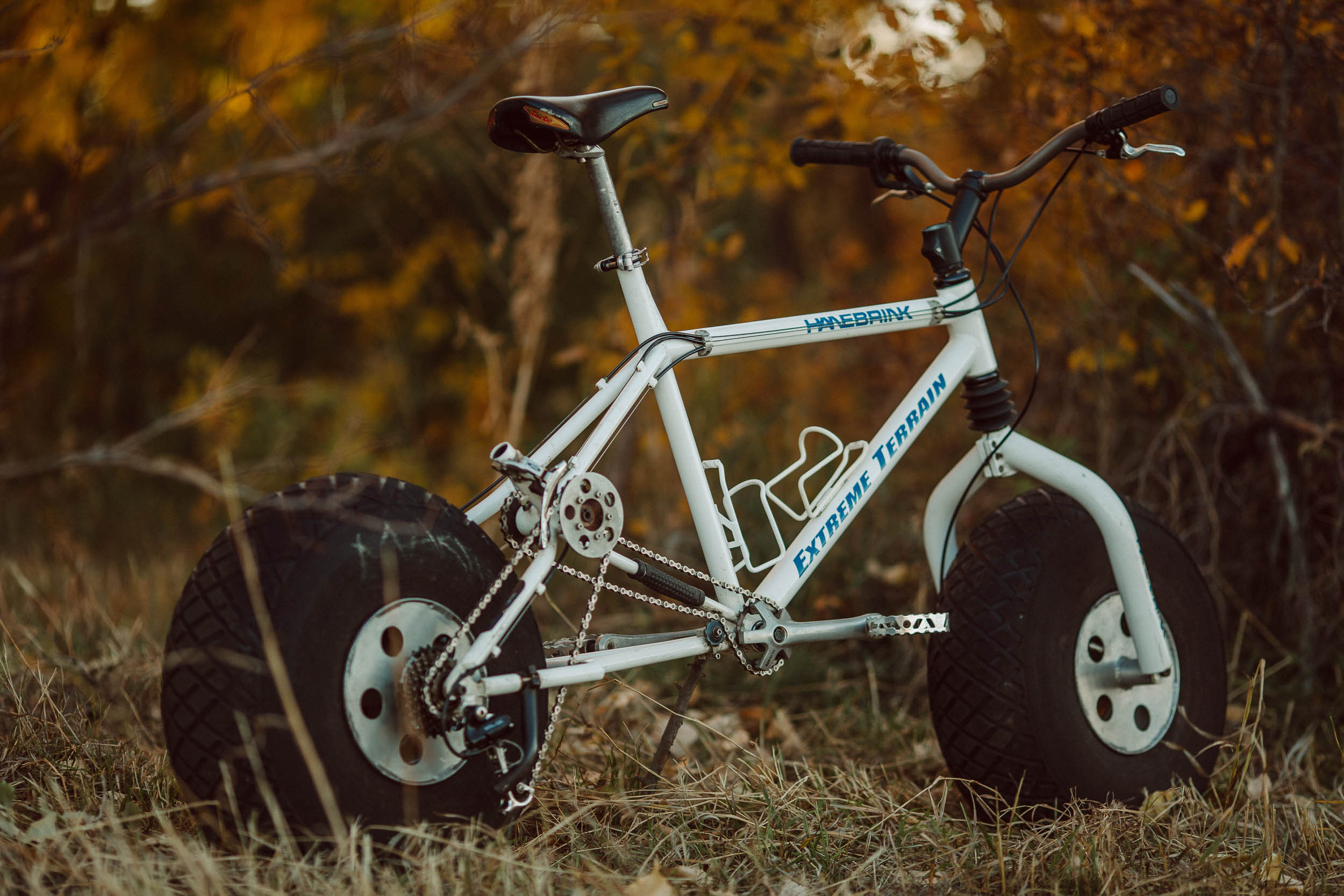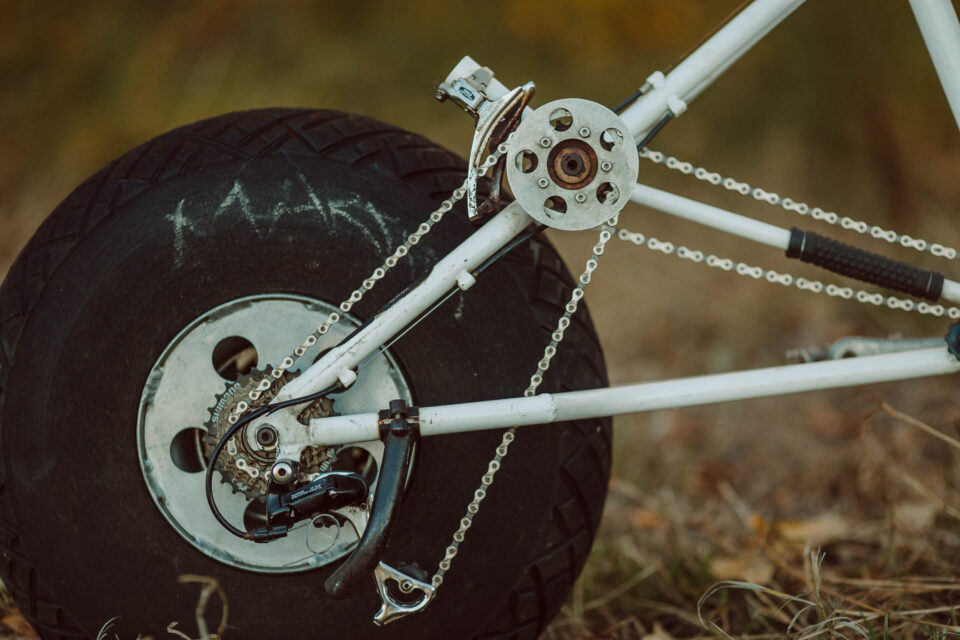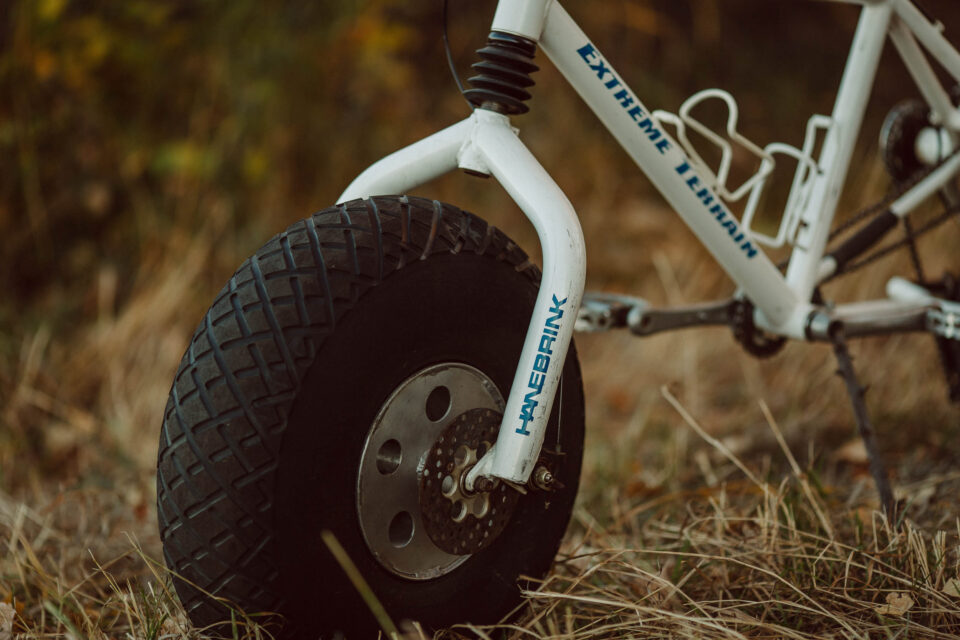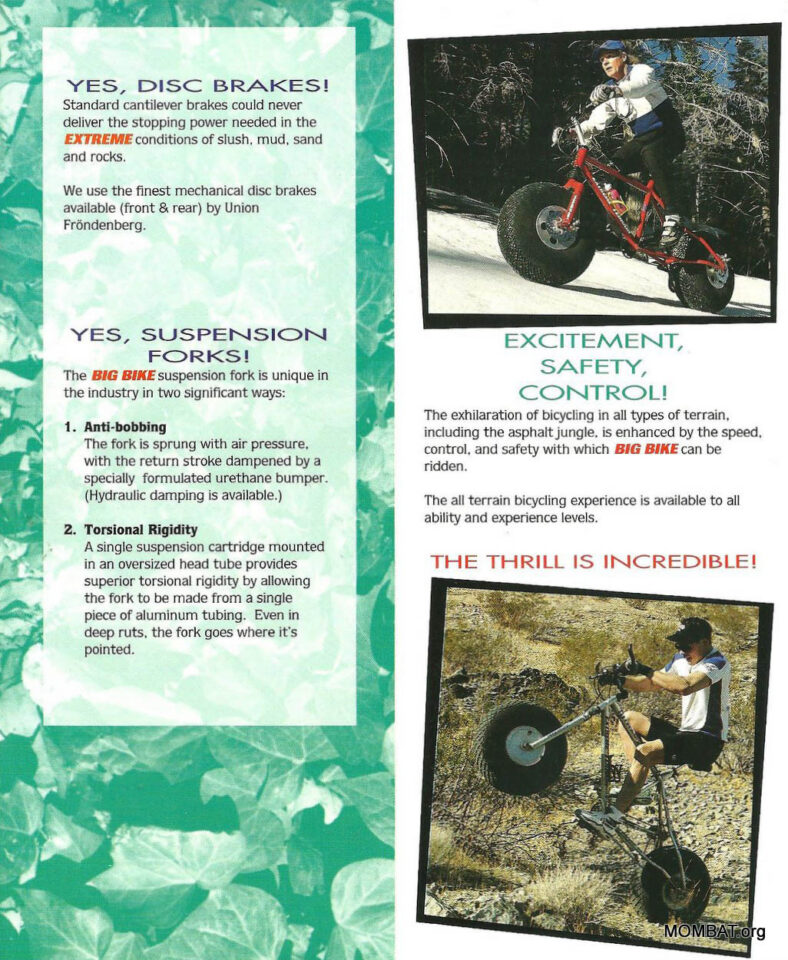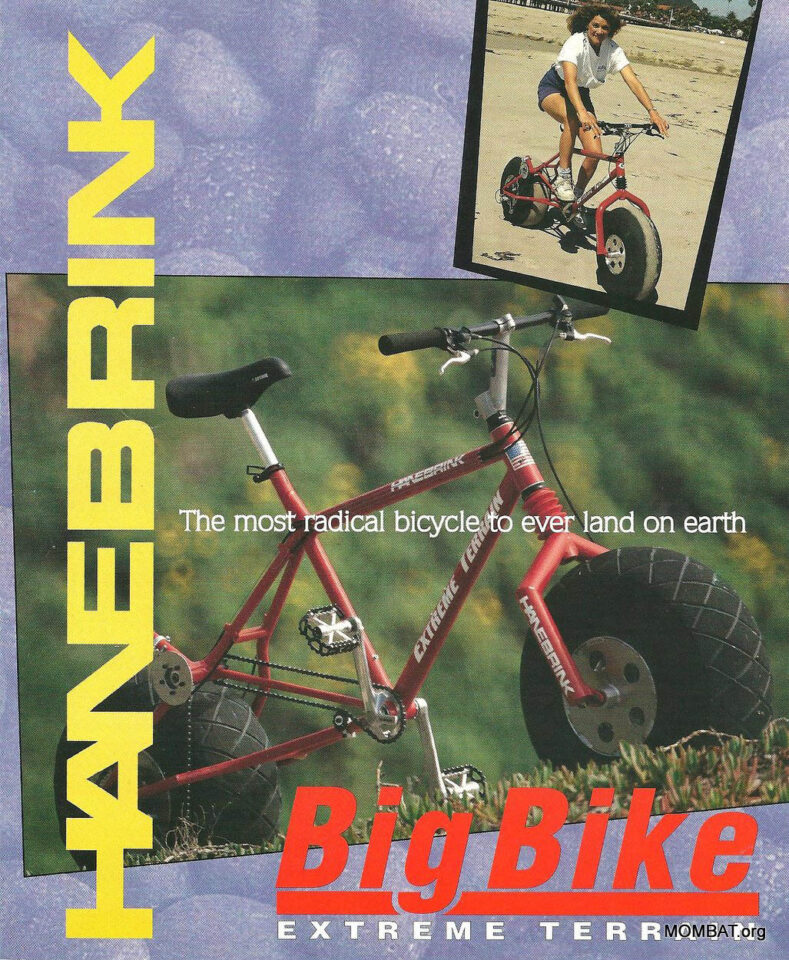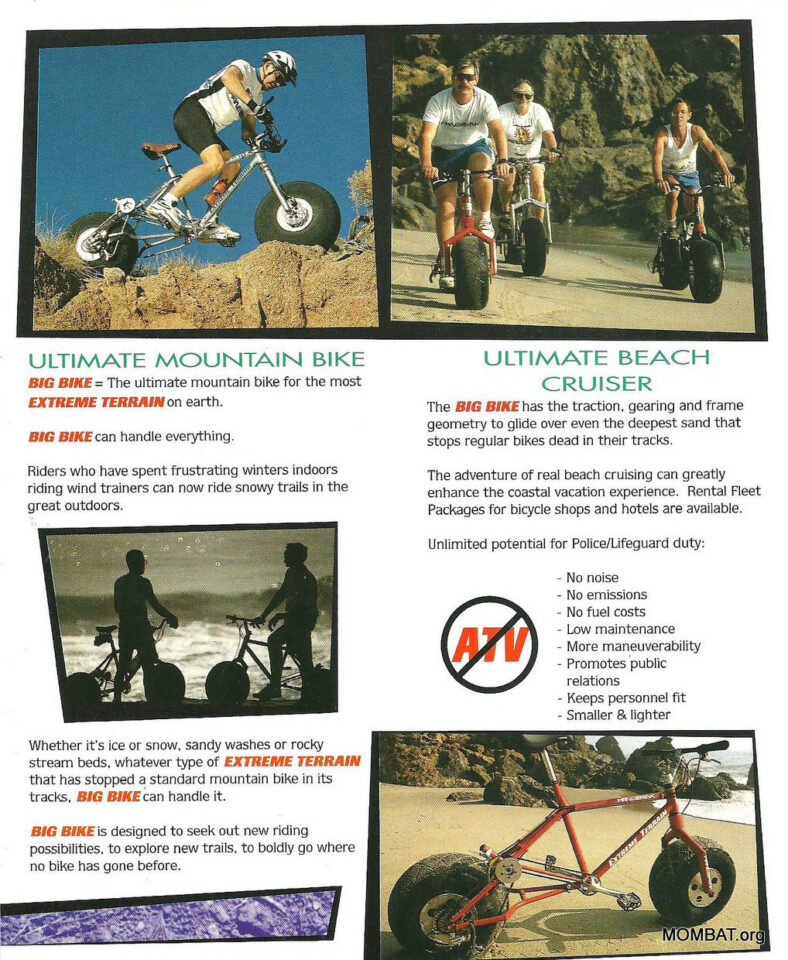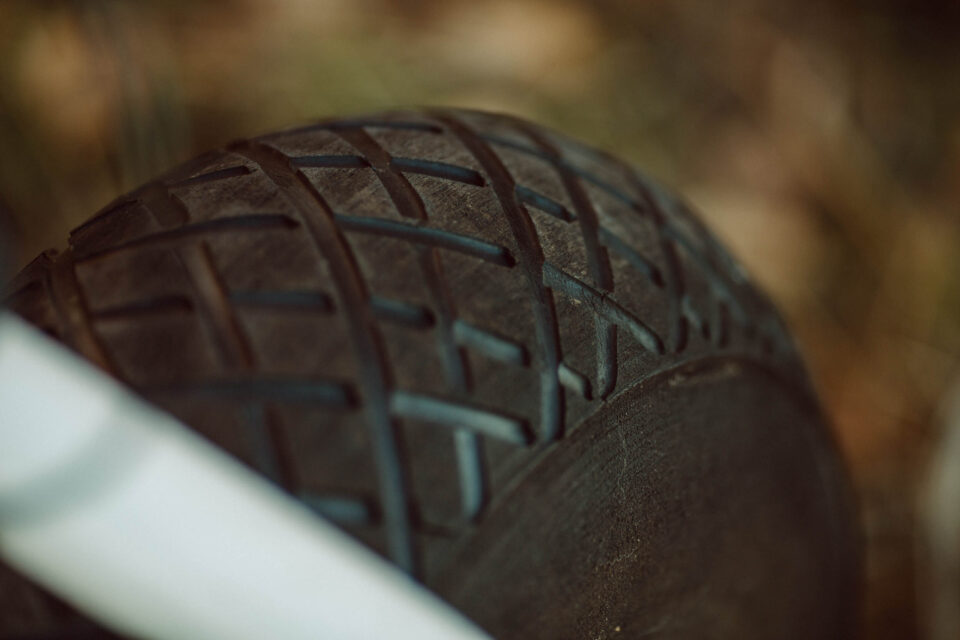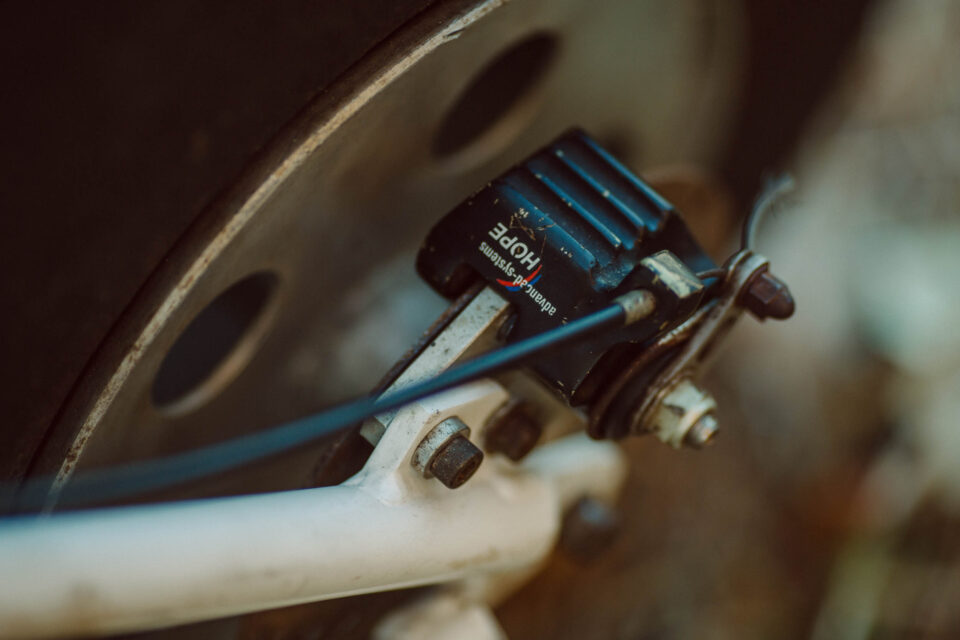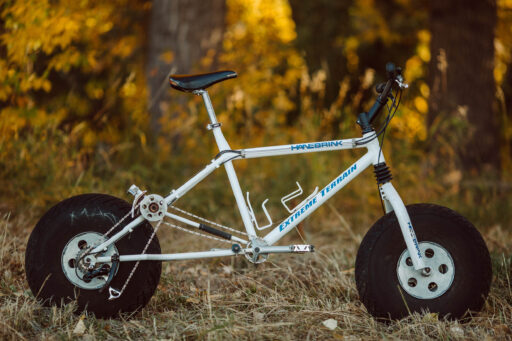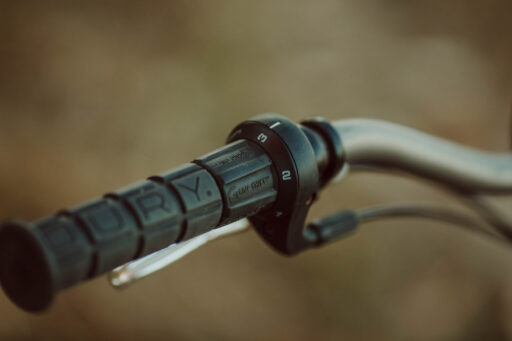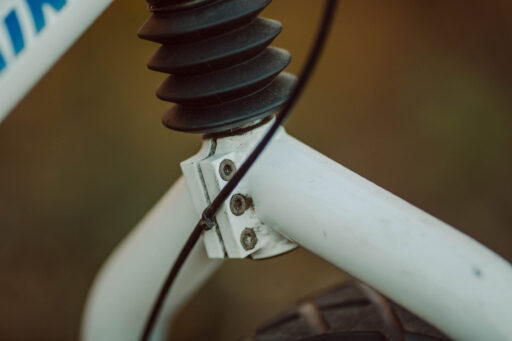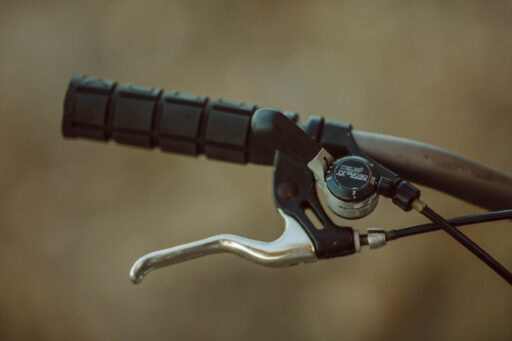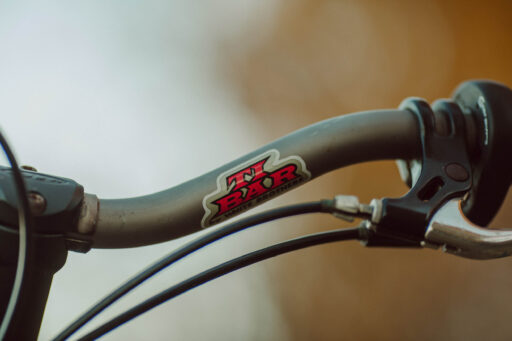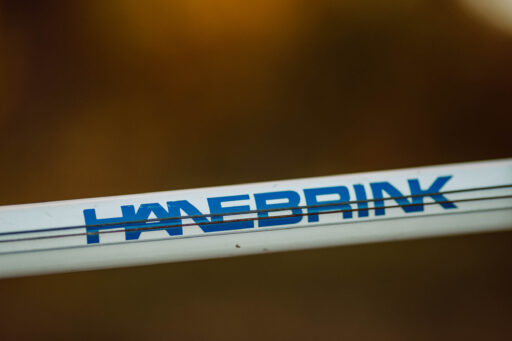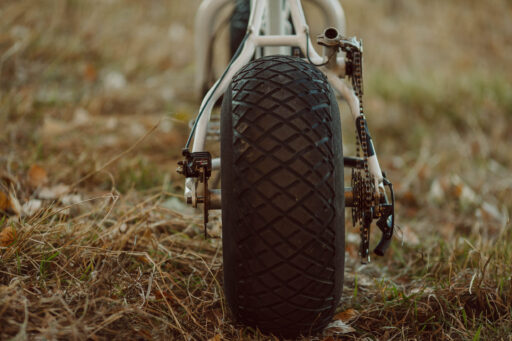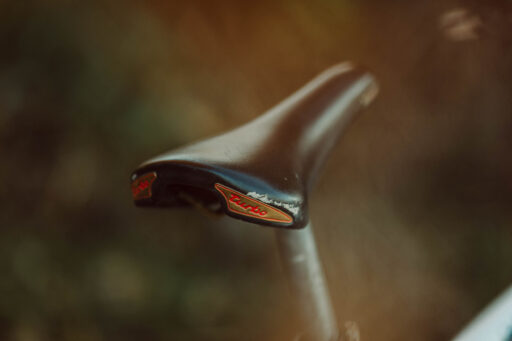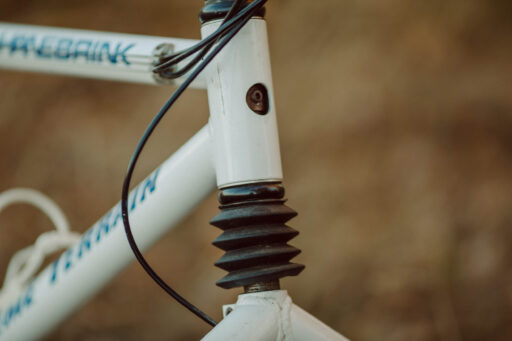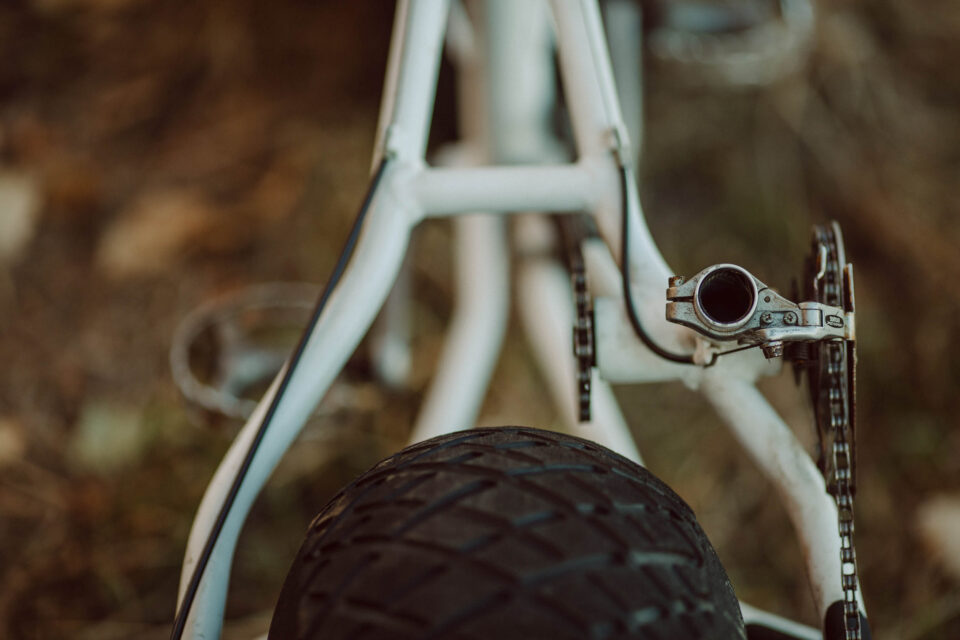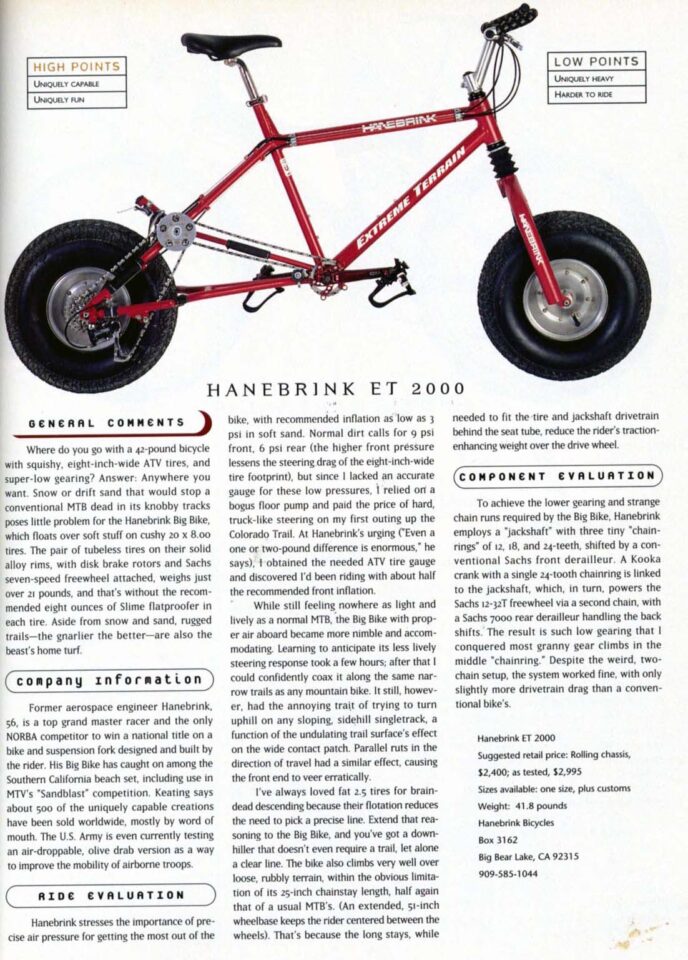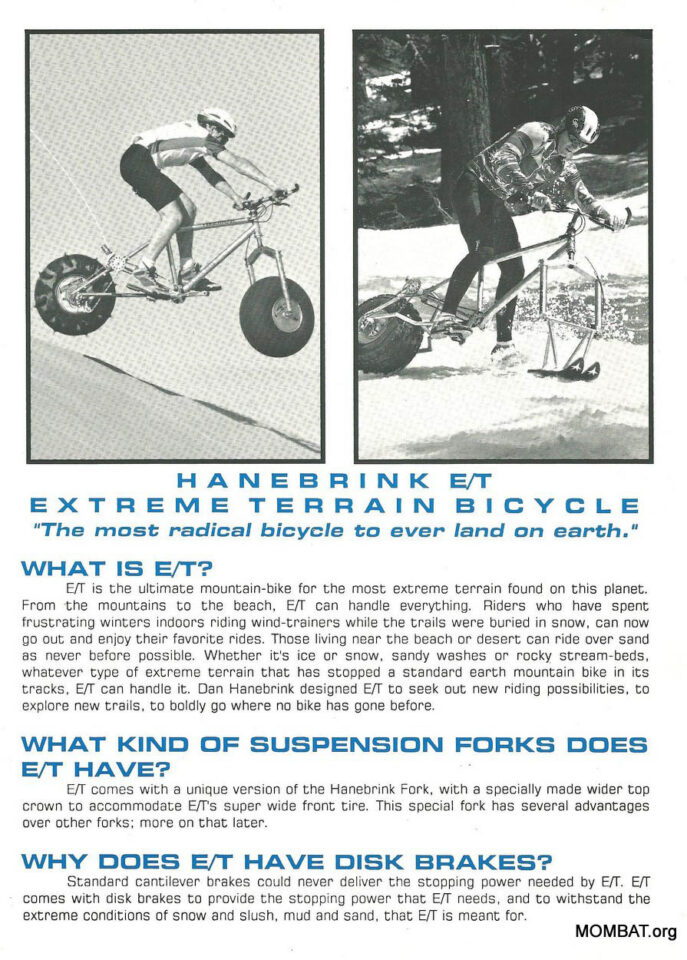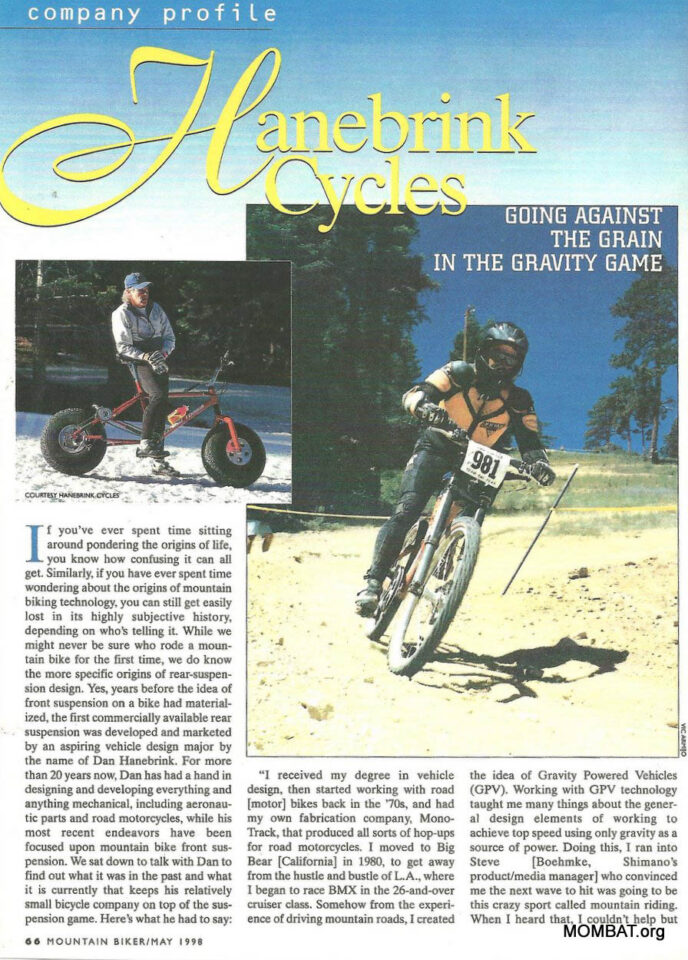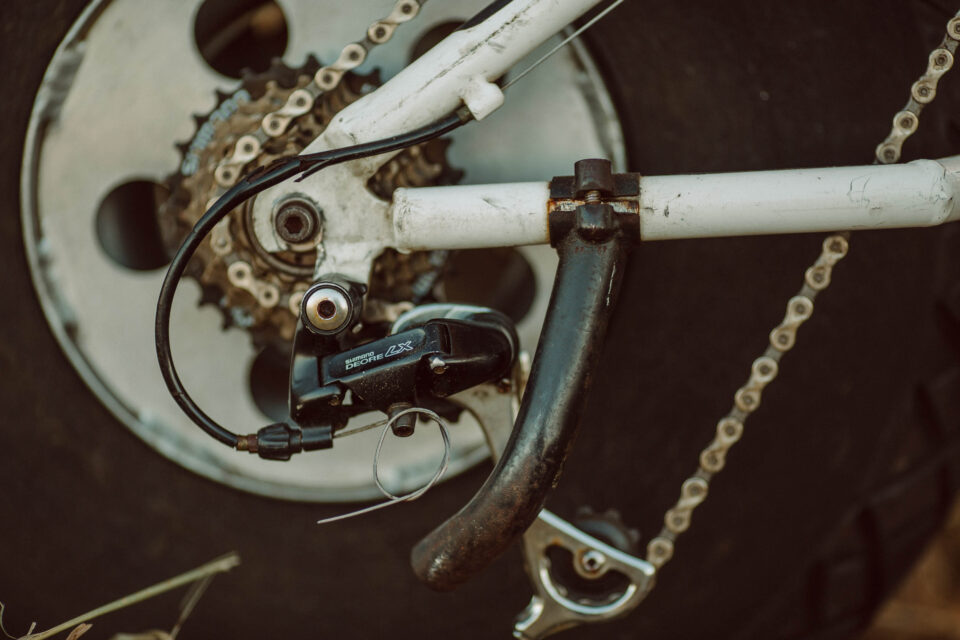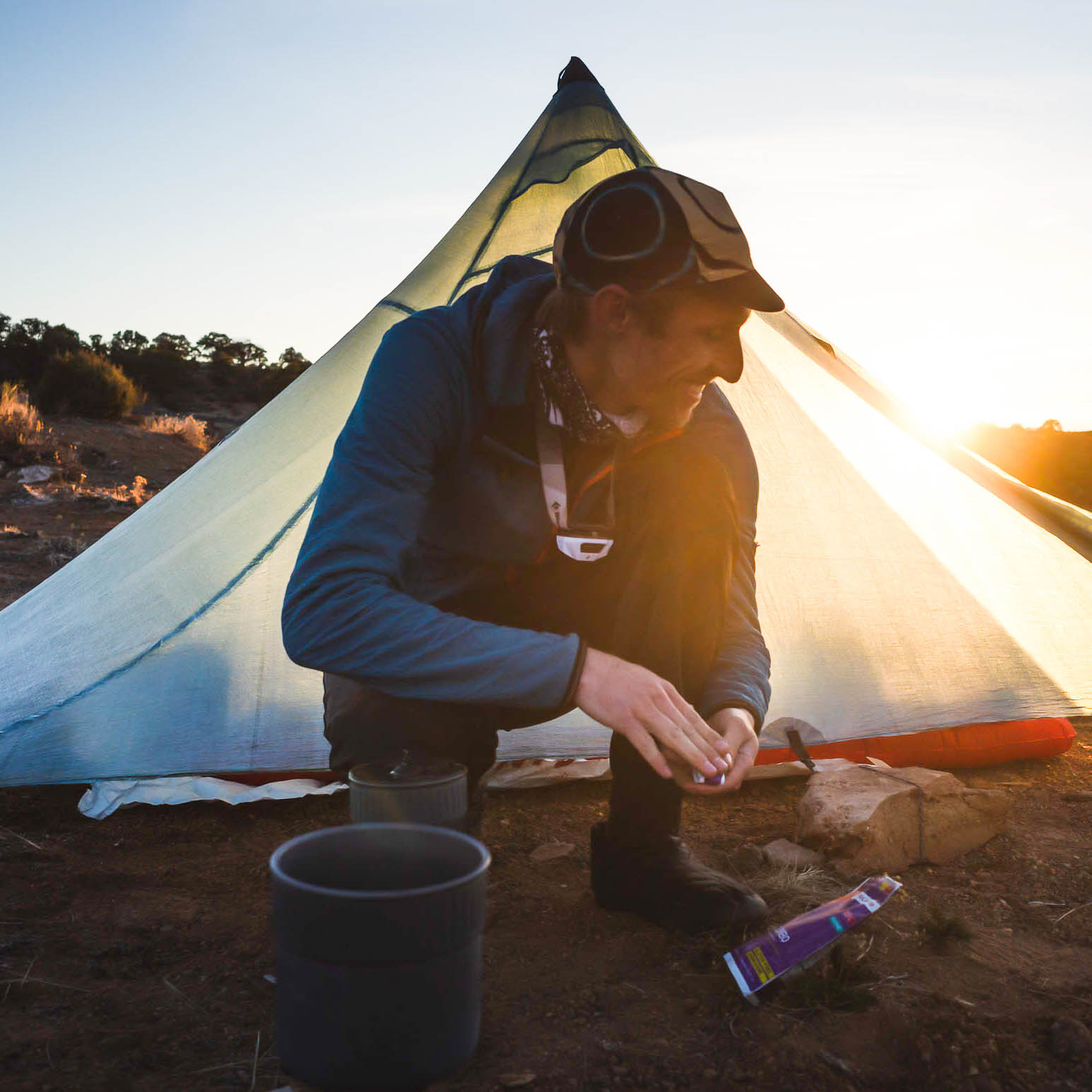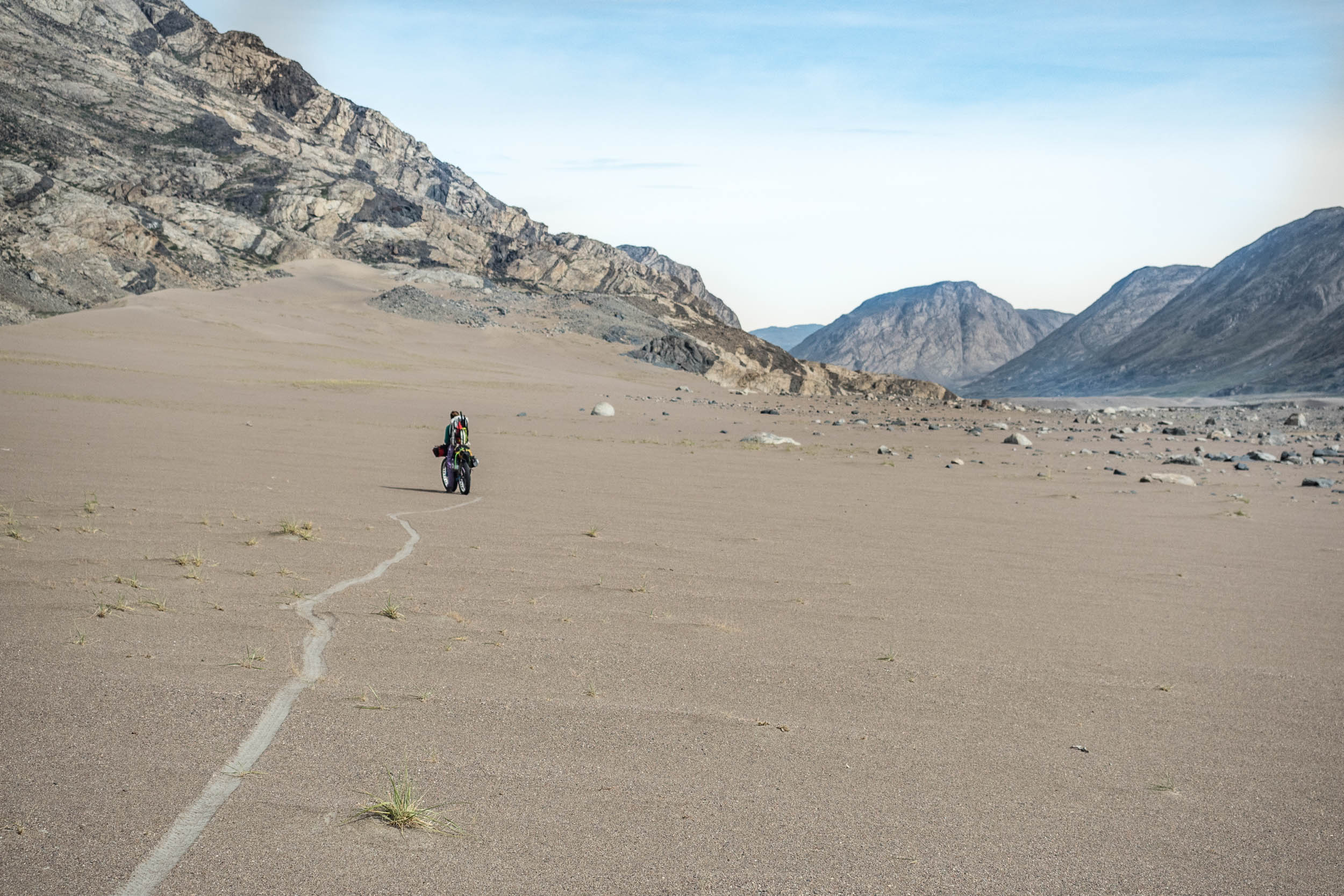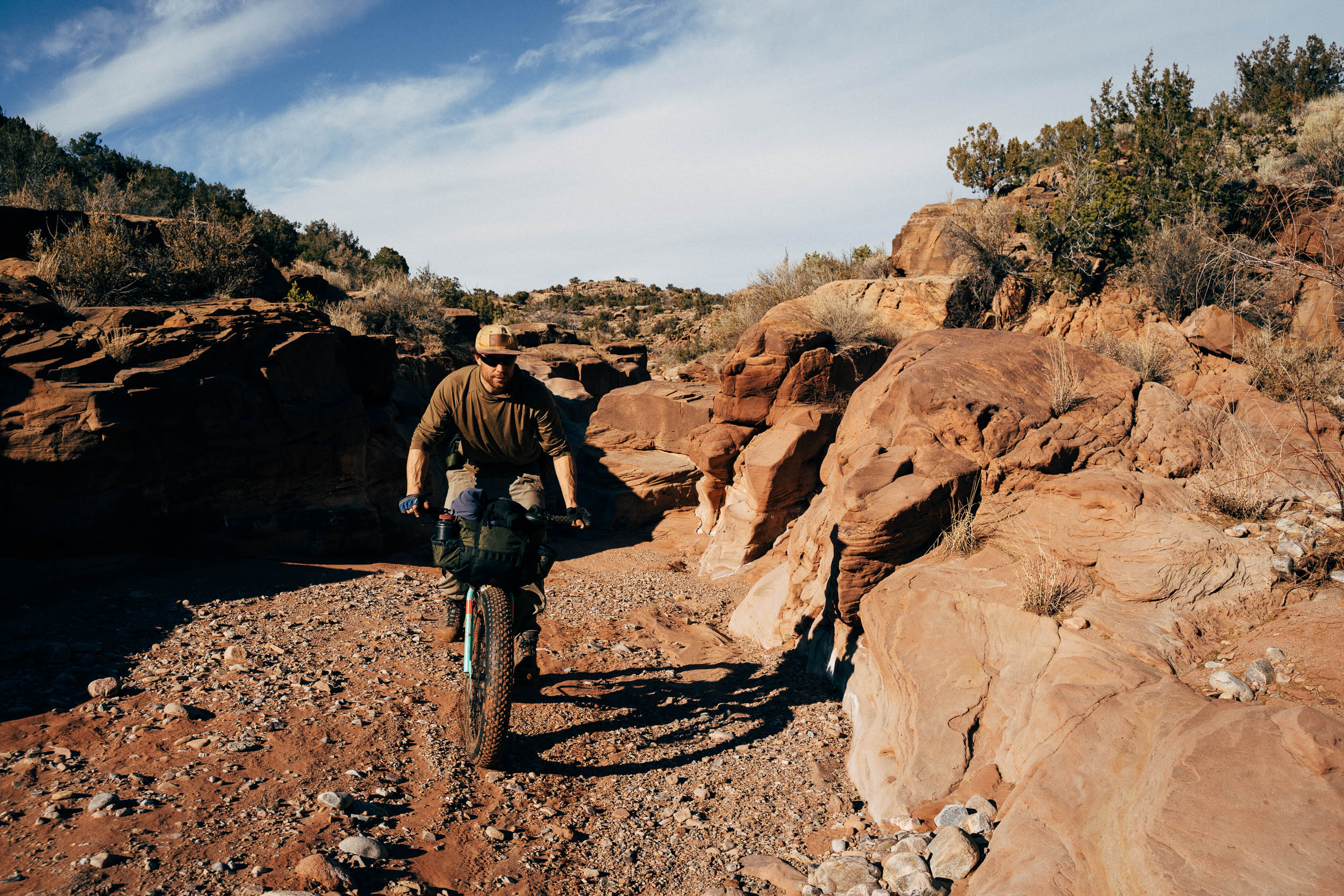Hanebrink Extreme Terrain: The First Production Fat Bike
Envisioned by Dan Hanebrink and released in 1991, the Hanebrink Extreme Terrain might be the most radical bike ever to land on Earth. In this piece, Josh Hicks shines some light on one of the rarest pieces in his collection and examines it through a modern lens. Discover the fascinating history of the first production fat bike here…
PUBLISHED Jan 23, 2024
Words and photos by Josh Hicks
Winter has finally arrived in Colorado. Multiple consecutive days of 4-6” snowstorms have me in complete fat bike mode. It’s a season of cycling I long for every year. But before I spiral into a soapbox of my love for riding in the snow, let’s stay on topic with a look at this ultra-rare 1994 Hanebrink Extreme Terrain, the most radical bike ever to land on Earth.
The late Dan Hanebrink, who passed in 2018 at the age of 80, was a designer and engineer based out of Big Bear Lake, California. He was often described as a “mad scientist behind bars” and is known to some as the father of fat bikes. Dan was always up to something outside the box. He was a racer himself, earning six national championship age group titles. Hanebrink first rose to fame with his design of a four-wheel-drive, four-wheel-steering, amphibious car that he called the “Box.” Its body was made of fiberglass, and he engineered the whole thing, later appearing on the cover of Popular Science magazine in 1976.
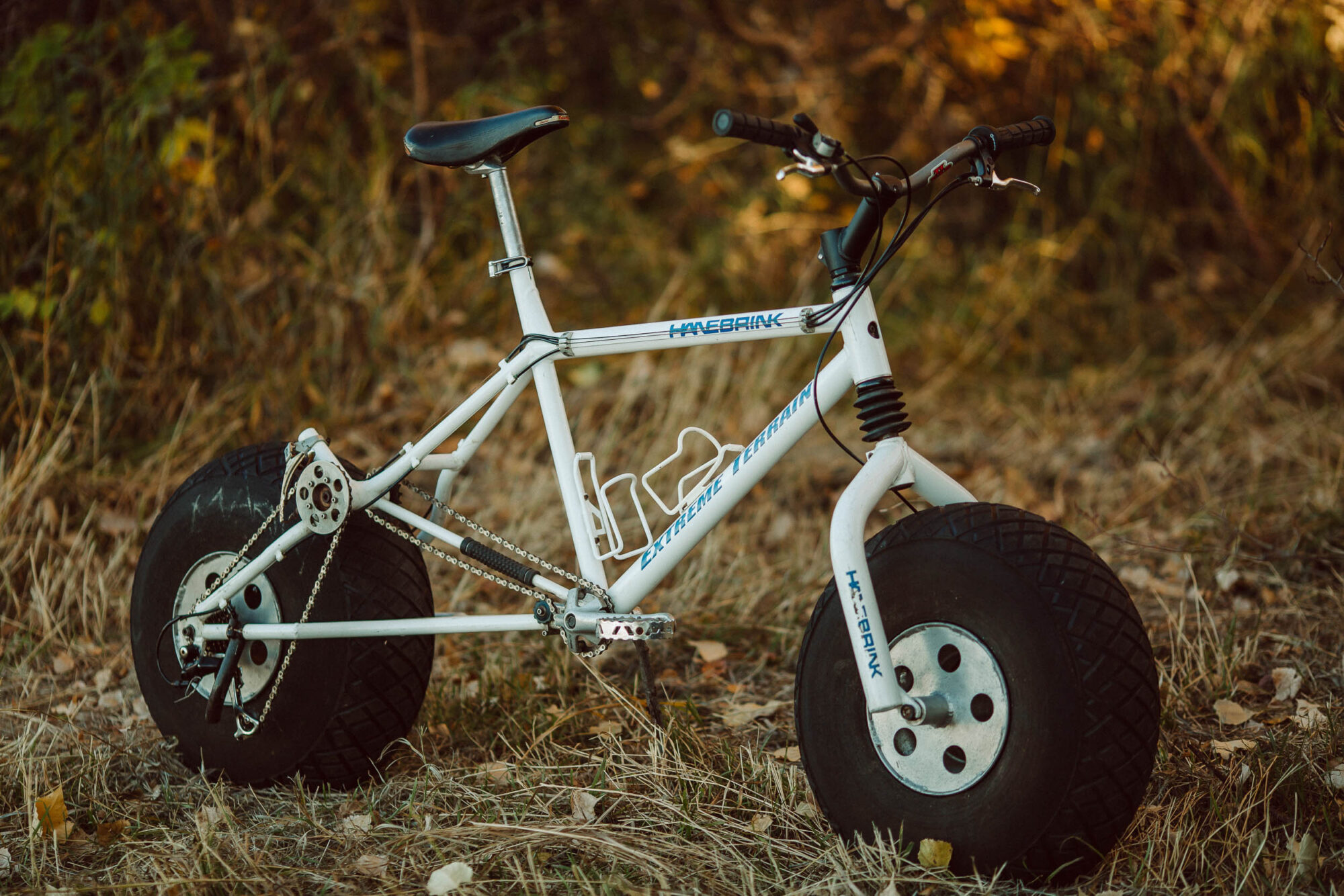
Just four years later, he found his way to bicycles, starting in the BMX scene with modified 20-inch-wheeled Gravity Powered Vehicles (GPV) that could reach an astounding 85 miles per hour. Also in the 1980s, Dan worked with Brian Skinner to create one of the first rear-suspension mountain bikes. It would go on to appear in the first issue of Mountain Bike Action magazine in 1986. A decade of aerodynamic GPV racing down the steep roads in the mountains around Big Bear and Palm Springs, California, led him into his next chapter: fat bikes.
In 1991, Dan invented this 6061 aluminum “Extreme Terrain” bike, featuring up to 10″ wide tires. At the time, many enthusiasts pushed the boundaries by riding in conditions that would be impractical on conventional mountain bikes. The E.T. was originally designed to be ridden in snow, sand, or any surface one could find on two wheels. A company named Skat-Trak provided the ATV-modified tires, shaving upward of eight pounds of rubber off the tires to reduce weight.
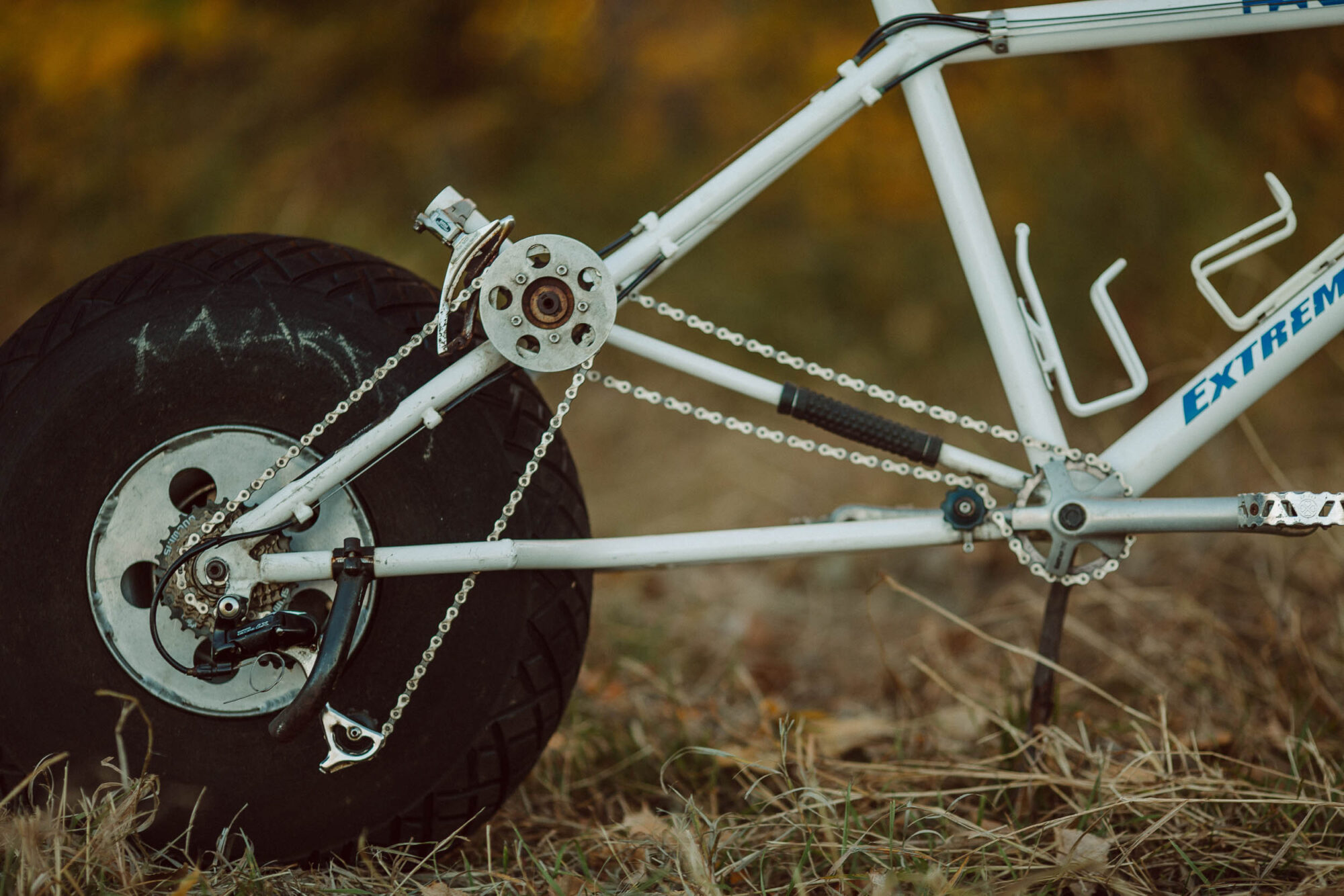
Further, a hand grinder was used on the treads to custom shape the lugs on every tire for increased traction. Several users even tried drilling screws into the tires, acting as studs. In the end, the E.T.’s front wheel didn’t steer well in snow, so Dan designed an extra fork for the bike to allow the mounting of two small skis at the front of the bike for better handling out on the slopes.
The Extreme Terrain bike weighs about 40 pounds and was originally available for purchase as a rolling chassis consisting of a frame, fork, wheels, and jackshaft assembly. The rest of the build typically was completed with what folks had in their parts bins. Many are seen with a bar-end protecting the rear derailleur, a single chainring up front, and early Hope Technology disc brakes.
Gearing was typically 24T up front, a 24T on the jackshaft, and a 12-18-24T cluster at the front derailleur, which results in the equivalent of a 24/36/48 triple ring setup. Finally, a seven-speed 12-32T freewheel was outfitted on the rear. Tire pressure is best at 6-9 PSI for hardpack and 3 PSI for snow and sand. The front fork has 2.5” of suspension and features a Schrader valve in the top of the fork steerer. The two benefits Dan marketed with this fork design were Anti-Bobbing and Torsional Rigidity. The fork is sprung with air pressure, and the return stroke is dampened by a formulated urethane bumper.
E/T Geometry and Frame Specs
- Headtube Angle 70°
- Seattube Angle 70°
- Bottom Bracket Width 73mm
- Chainstay Length 25.5″
- Bottom Bracket Height 11.6″
- Wheelbase 50.5″
- Rear Spacing 342mm
- Headtube Length 1.25″
- Seattube Length 27.2mm
About 500 of these bikes were said to be sold, including to the U.S. Army, which tested an air-droppable version to improve mobility for troops in the field. In the years to follow, these bikes became the preferred transportation for adventurers cycling in the Arctic. In 2000, Doug Stroup used a Hanebrink Extreme Terrain to become the first person to ride 200 miles in Antarctica, and more than a decade later, in 2012, Helen Skelton also used one to become the first person to reach the South Pole by bicycle.
I’ve managed to dig up roughly a dozen Extreme Terrain bikes online and have only seen one other in person, which is currently in my possession and being stored for another collector. These two are the only examples I’ve seen for sale in the last three or so years, and they’re highly sought after by folks who are into obscure bikes, as they rarely come up for sale. I found this bike in the furthest northwest corner of the United States on Orcas Island, Washington, and had it shipped for a whopping $260 in an e-bike box. I photographed it in as-found condition.
Riding the Hanebrink Extreme Terrain on a paved or gravel bike path is quite pleasant and smooth. The bike has a flotation feel to it and pedals opposite of what you would think based on its weight and size. To say this bike turns heads would be an understatement. I recently rode it over to my local brewery and found other cyclists speeding up or turning around to get a closer look. “What in the world are you riding!?” and “Is that a moon bike!?” were common questions I was answering on my way to get a hazy IPA. It happened to be a Thursday, which is live music night at this particular brewery, and it’s not uncommon to see 50 to 75 full-suspension carbon mountain bikes outside. I pulled up and parked right in the middle of the bike storage, attracting crowds pointing at specific parts, taking photos, and scratching their heads while observing.
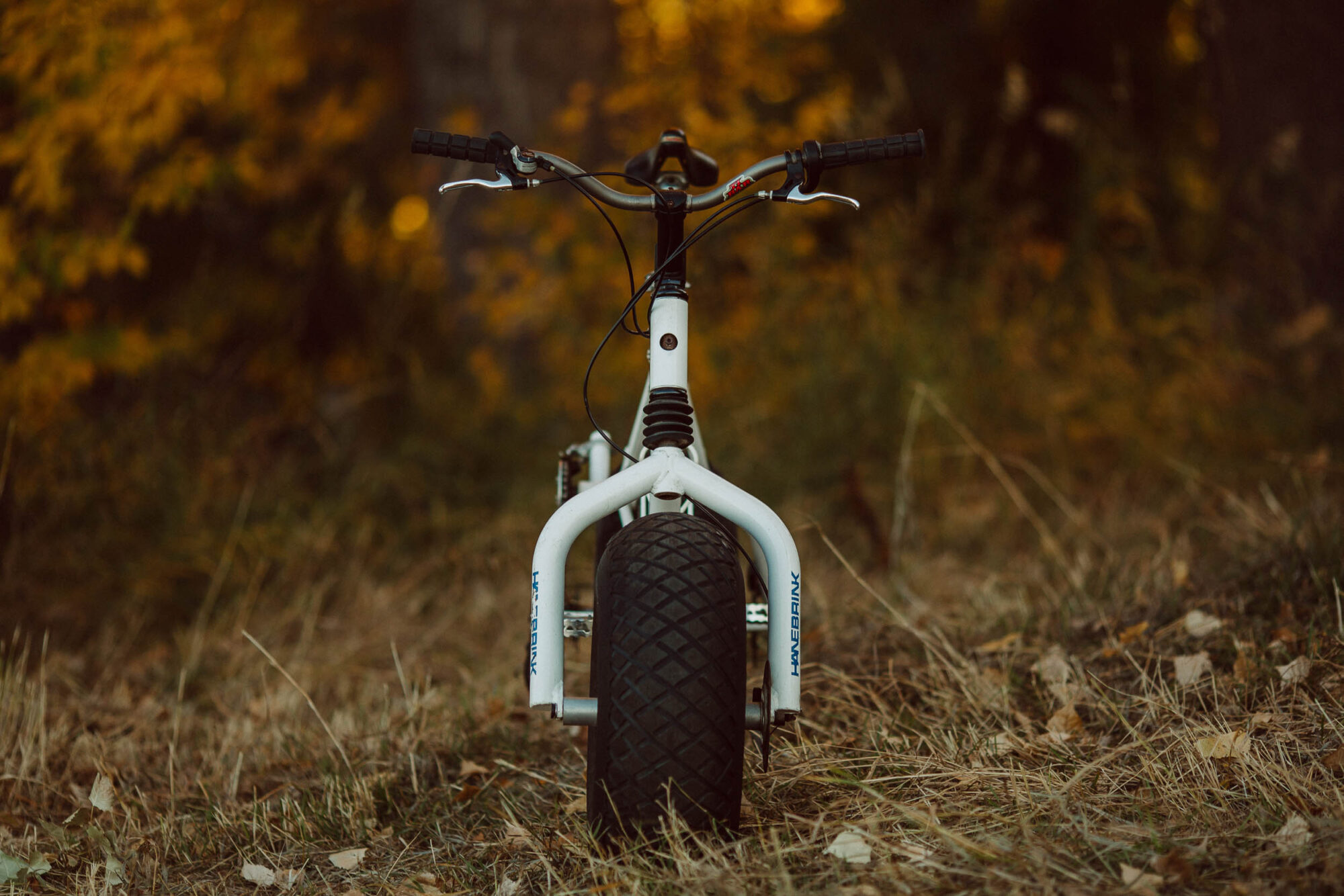
While on singletrack, easily the best part about the Extreme Terrain is the super low gearing. Disc brakes have advanced leaps and bounds since these early generation Hope brakes. A fist full of brake lever barely brings the bike to a stop, at least in their current condition. To make things even more interesting, the moment you get offline, the front wheel immediately grabs the trail’s edge and pulls you off the road. Perhaps it’s in the name, or maybe this could be due to the original tires and how dry they are. The shaved sidewalls are nearly down to the bare tire casing and have a groove in the direction of the tire rotation, which could be the cause, too.
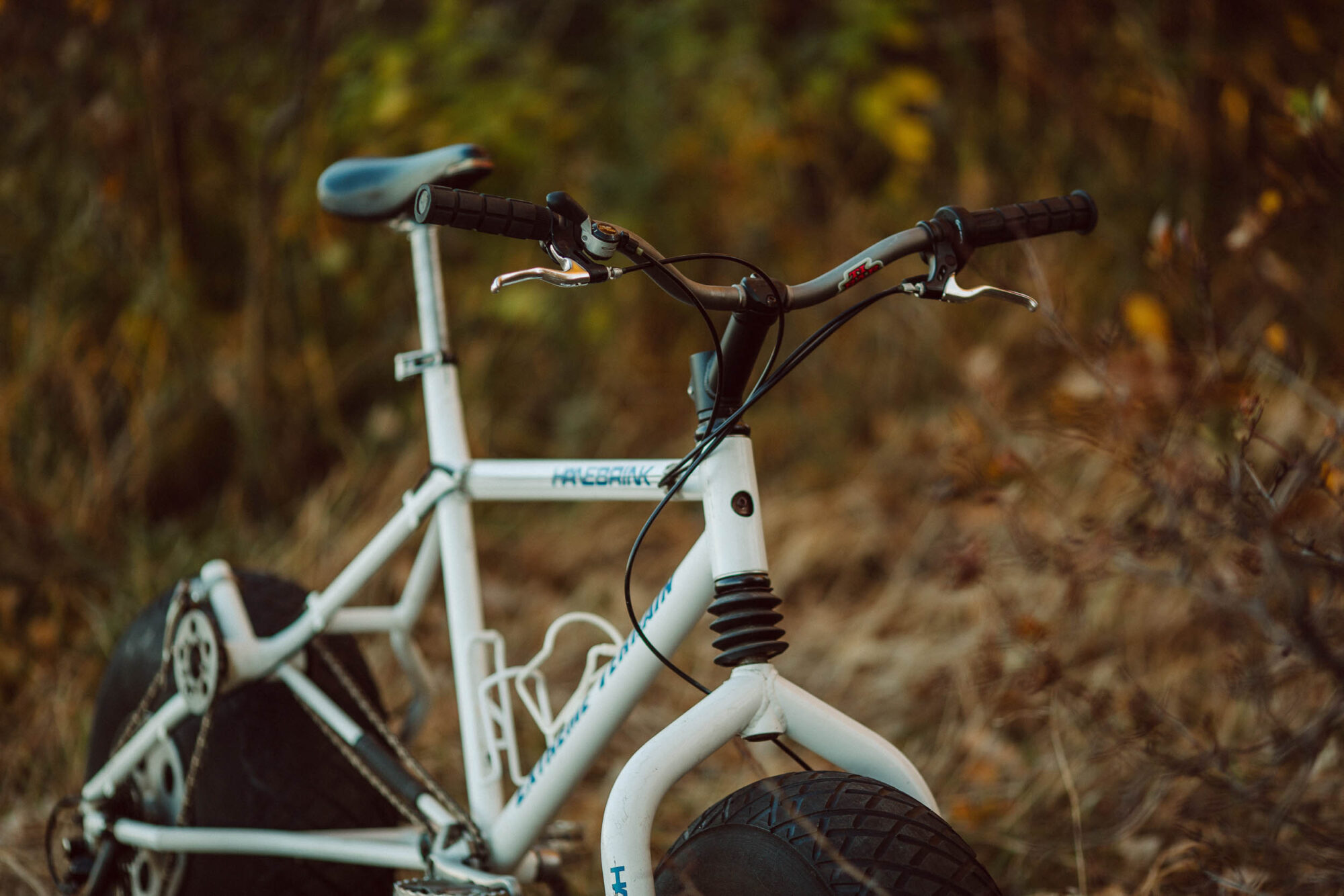
In the end, as much as a conversation starter this bike is, I prefer my modern fat bike for the conditions Dan Hanebrink originally designed his Extreme Terrain bike to handle. If I’m feeling extroverted and want to give a history lesson while out and about, I’ll grab this bike instead. As a collector, I’m into obscure bikes and dive into the handmade, exploratory side of cycling, where engineers and inventors were trying new things on every project. This will be one of the bikes I hang onto for a long while.
If you find yourself intrigued and curious to throw a leg over it, reach out next time you’re on the front range in Colorado; we’ll go for a cruise and maybe end up at another brewery!
Further Reading
Make sure to dig into these related articles for more info...
Please keep the conversation civil, constructive, and inclusive, or your comment will be removed.







